The problem with modern headsets is you can't hear your own voice or determine if the microphone is working. There is absolutely no way to monitor the headset microphone with phone software. That was attempted long ago. The best solution was a software loopback which delayed it. Android allowed nowhere close to the latency of ALSA, despite all the hardware being there.
Then, there was the idea of using a confuser soundcard to mix the microphone with speakers for monitoring, but the microphone would have to be split & sent back to the phone. To keep emissions from the phone out of the confuser soundcard, there would have to be an RF choke & voltage following amplifier. It would need some kind of mute button which didn't make pops. Android's mute button with non sensical screen blanking is useless. There would be powered analog electronicals no matter what.
This was 1st solved in 2012 with an analog headset monitor. It was a very large circuit board for what it did, using multiple LM324's to mix the microphone with the speaker output, power the speakers, & isolate the microphone from the phone. The original also had a large inductor to shield the microphone amplifier from the phone's RF emissions.

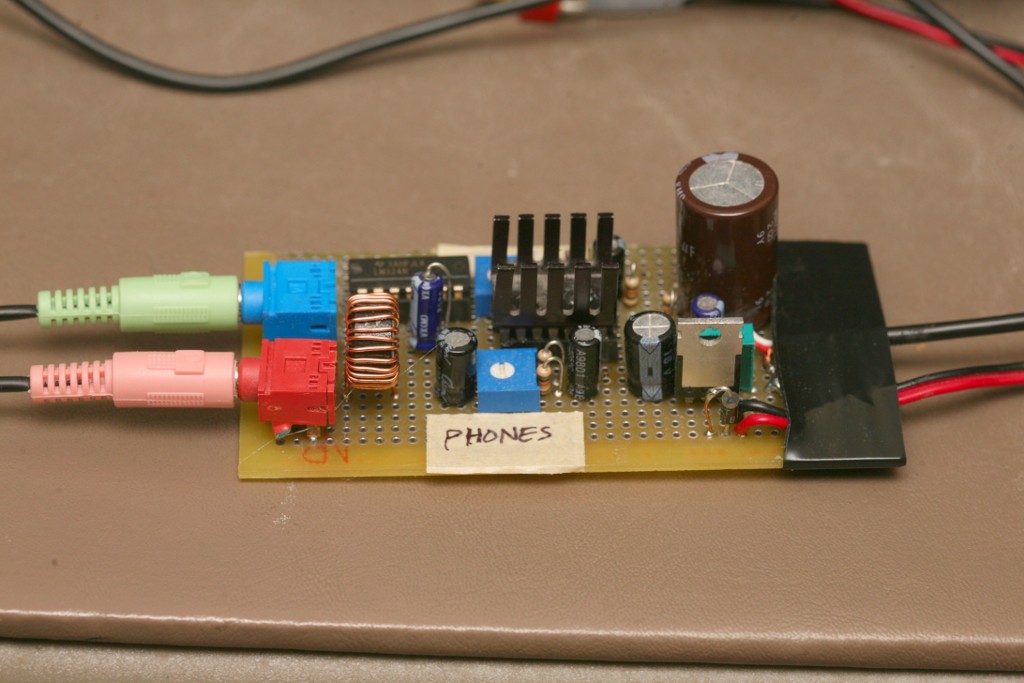
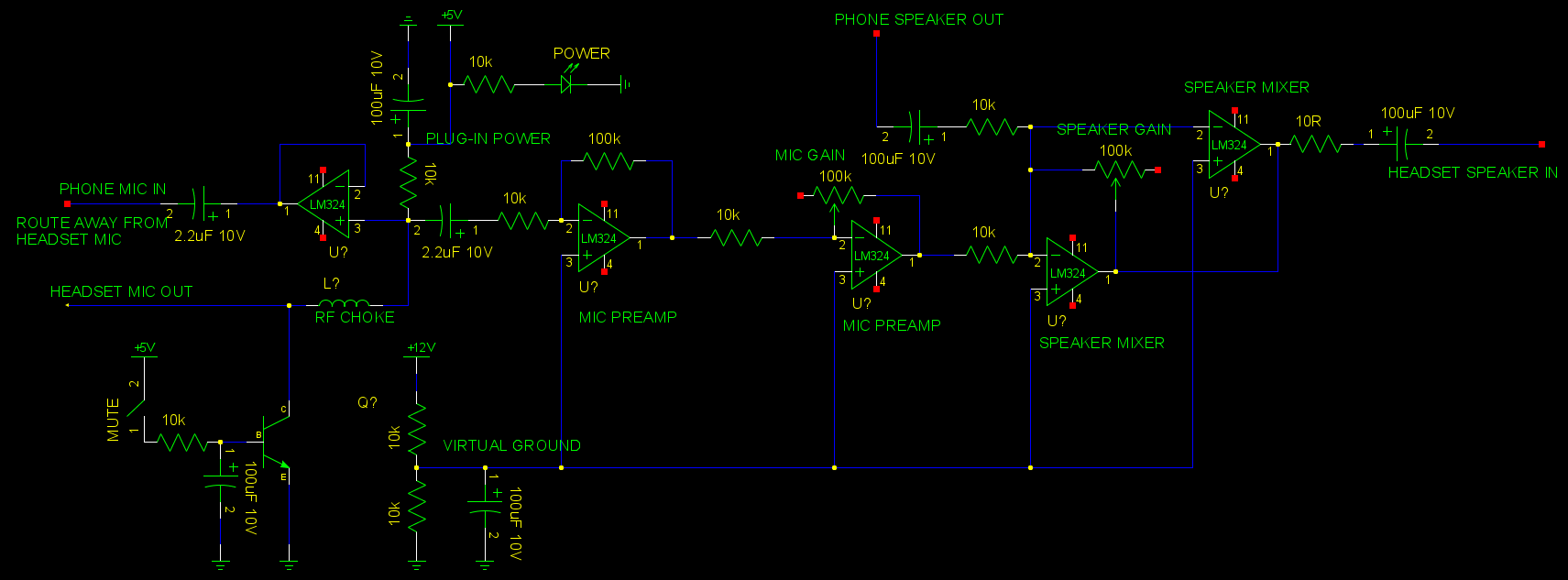
8 years later, it had grown into a quite complicated circuit. The mane additions over the years were an LED to show when it was on & a simple transistor to mute the microphone by grounding it. It also needed a resistor after the speaker mixer to prevent op-amp oscillation.
Because the Alphabet corporation doesn't allow us to have our phone screens on while making a call, it's very slow to toggle the software mute button. The lion kingdom finally added a mute switch to the headset mic out.
Using a switch to disconnect the microphone didn't work because RF just entered the floating wire. Turning off the phantom power didn't work because the microphone still detected sound without power. Turning off the voltage follower didn't work because current still flowed through the op-amp without power. Directly grounding the microphone made too much of a pop, but muted it.
Only a transistor turned on by an RC circuit could ground it without too much of a pop. There always must be a pop, since the microphone turns on at a threshold voltage instead of gradually getting louder. Only an NPN transistor would work, since it has to pull the voltage to 0.
The mane problem is the speaker gets louder when the microphone is muted. Not sure why this is.
The original design regulated 12V down to 5V for phantom power. Having 5V later proved useful for muting the microphone & powering an LED.
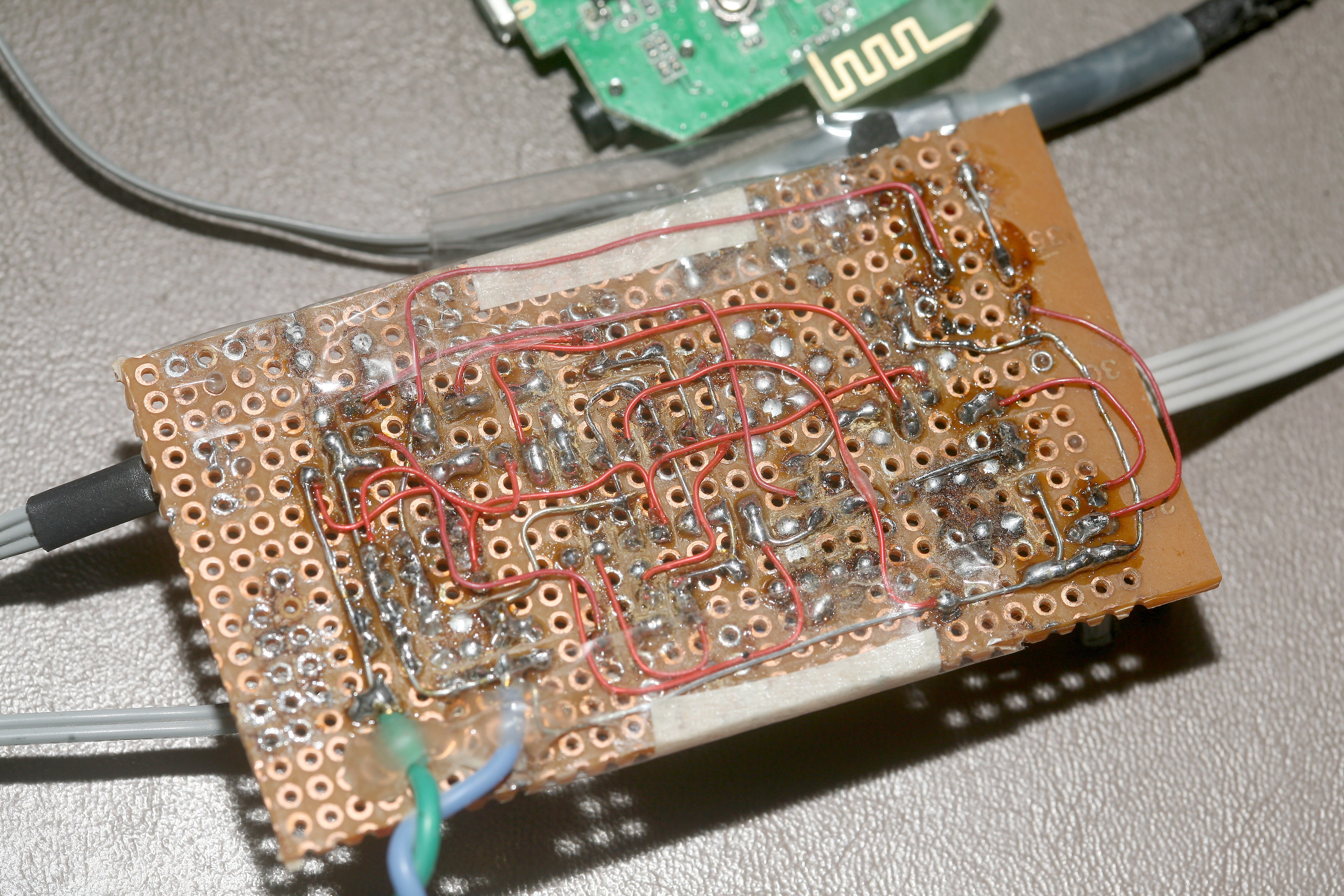
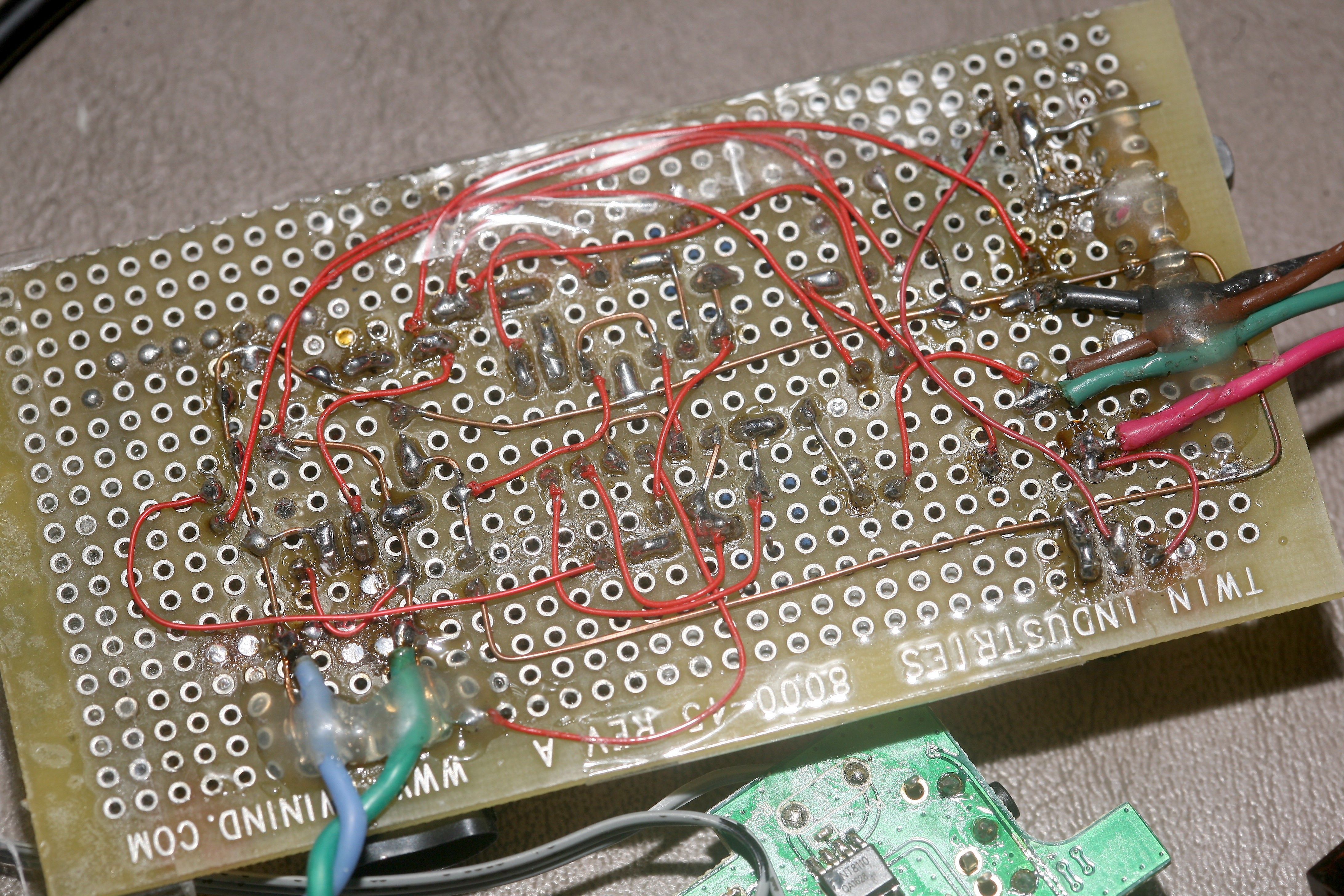
The original had 2 op-amps shorted to power both speakers in parallel. It could have used 1 op-amp for each speaker, but it would have required separate pots for each speaker.
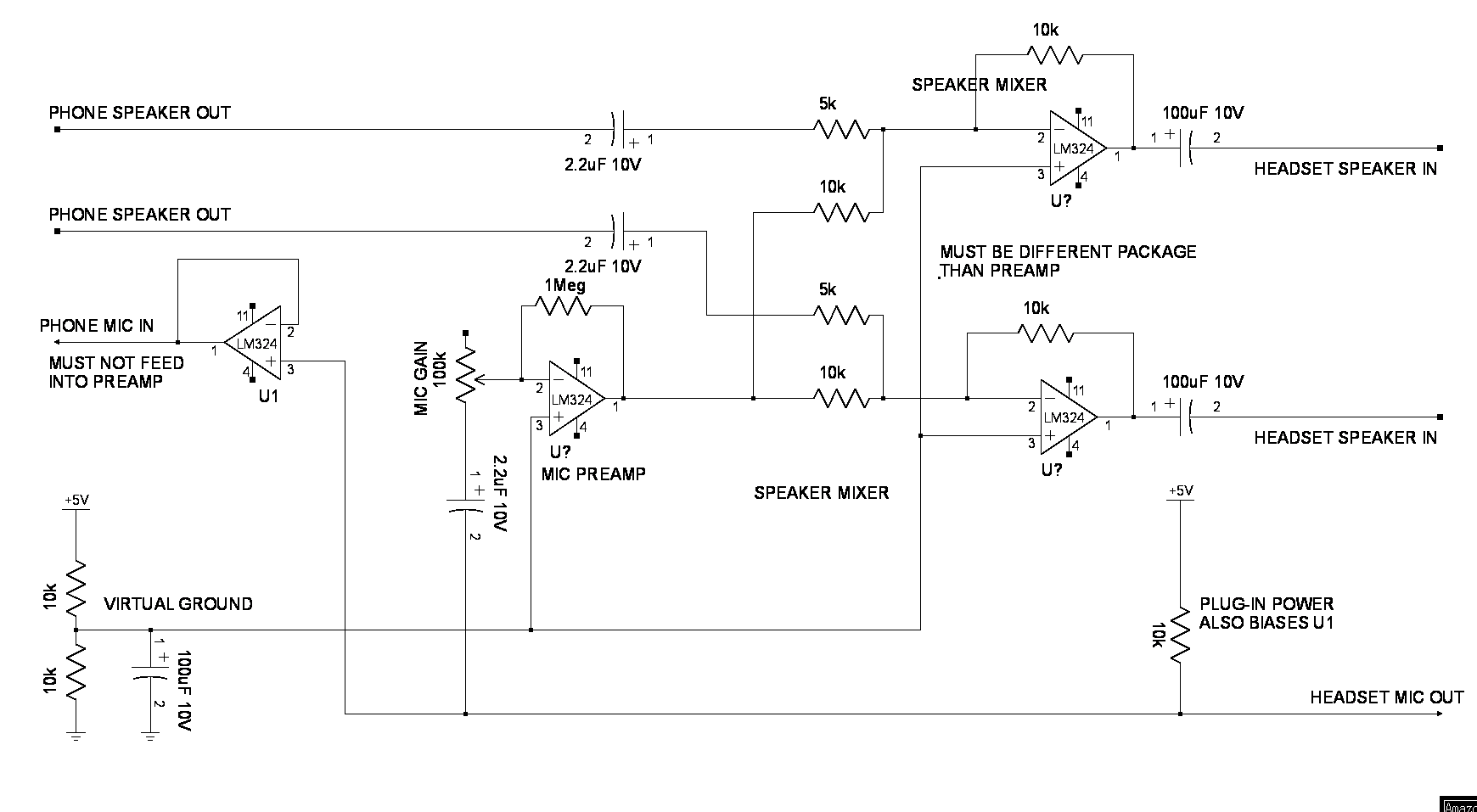
The original circuit was rebuilt twice, over the years, using surface mount & higher efficiency AD8604 op-amps. The rebuilds left out the inductor & had stereo sound. They had fixed gain for the speakers & mixed the same microphone signal into both speakers, after the preamp.
These redesigns proved fatally flawed. The AD8604's needed a 10R on the speaker output to stop oscillating. Newer phones, despite not using GSM, still produced interference which required the inductor. The higher efficiency AD8604's had serious feedback & crosstalk problems the LM324 didn't have. They might be intended for digital amplification rather than audio amplifiers.
The original design ganged 2 op amps to drive the speakers in mono. The new designs drove the speakers with 2 op amps in stereo. The original design used cascaded 10x amplifiers for the mic preamp. The new designs used a single 100x amplifier for the preamp. As in the original design, a voltage follower was required to keep signals emitted by the phone's microphone input from feeding into the board's microphone preamp.
The new designs used unregulated 4.2V from a lipo. The standby current was only 5mA. Peaks got it up to 20mA. It took a lot of bodging to adjust the phone volume. The original design had separate speaker & mic volumes. The new designs had only a mic volume.
New designs suffered from the power amplifier driving the headphones being in the same package as the preamp for the microphone. The cross talk between op-amps was causing feedback. A new design using 2 packages tried to fix the problem, but still suffered from feedback.
Another problem was replacing the headphone's TRS connectors with molex connectors may have caused louder glitches, enhancing the feedback.
In the end, the original through hole circuit with LM324's & 12V power was the ideal solution. Other lessons learned were longer cables were better. The phone shouldn't drag the board around. Single turn pots are a lot more convenient for audio than multiturn pots.
There was an idea to implement this circuit digitally in a microcontroller, but this required a lot more parts. It would still require all the amplification & isolation for the microphone. The microcontroller couldn't directly power the speakers because it would only generate half a wave, so it would need a proper speaker amplifier.
Given the amount of analog magic required to use a microcontroller, it would only be useful in mixing multiple audio sources. In that case, you might as well use a computer.
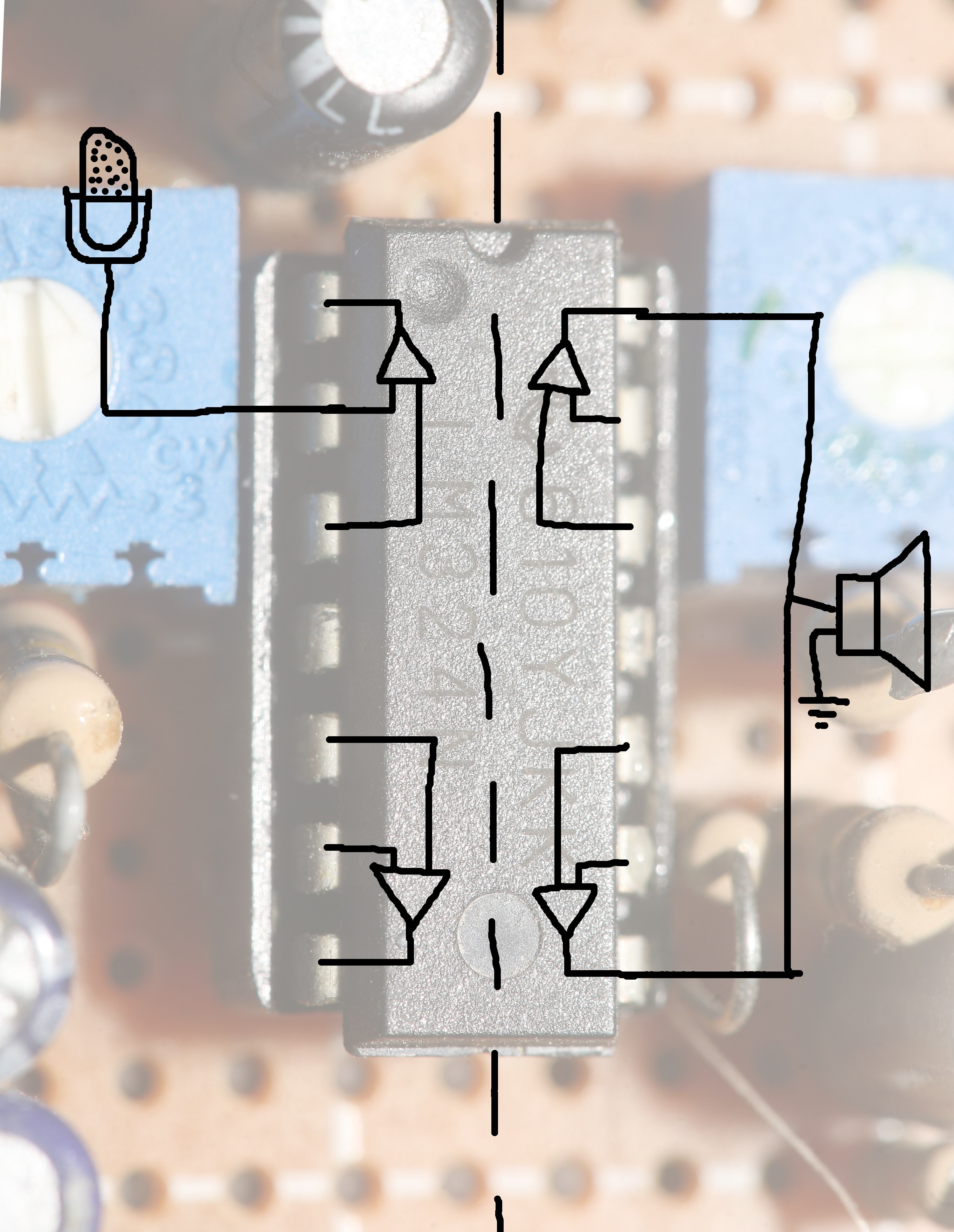
With the LM324, the high gain low current microphone preamp needs to be on the opposite side as the low gain high current speaker driver.
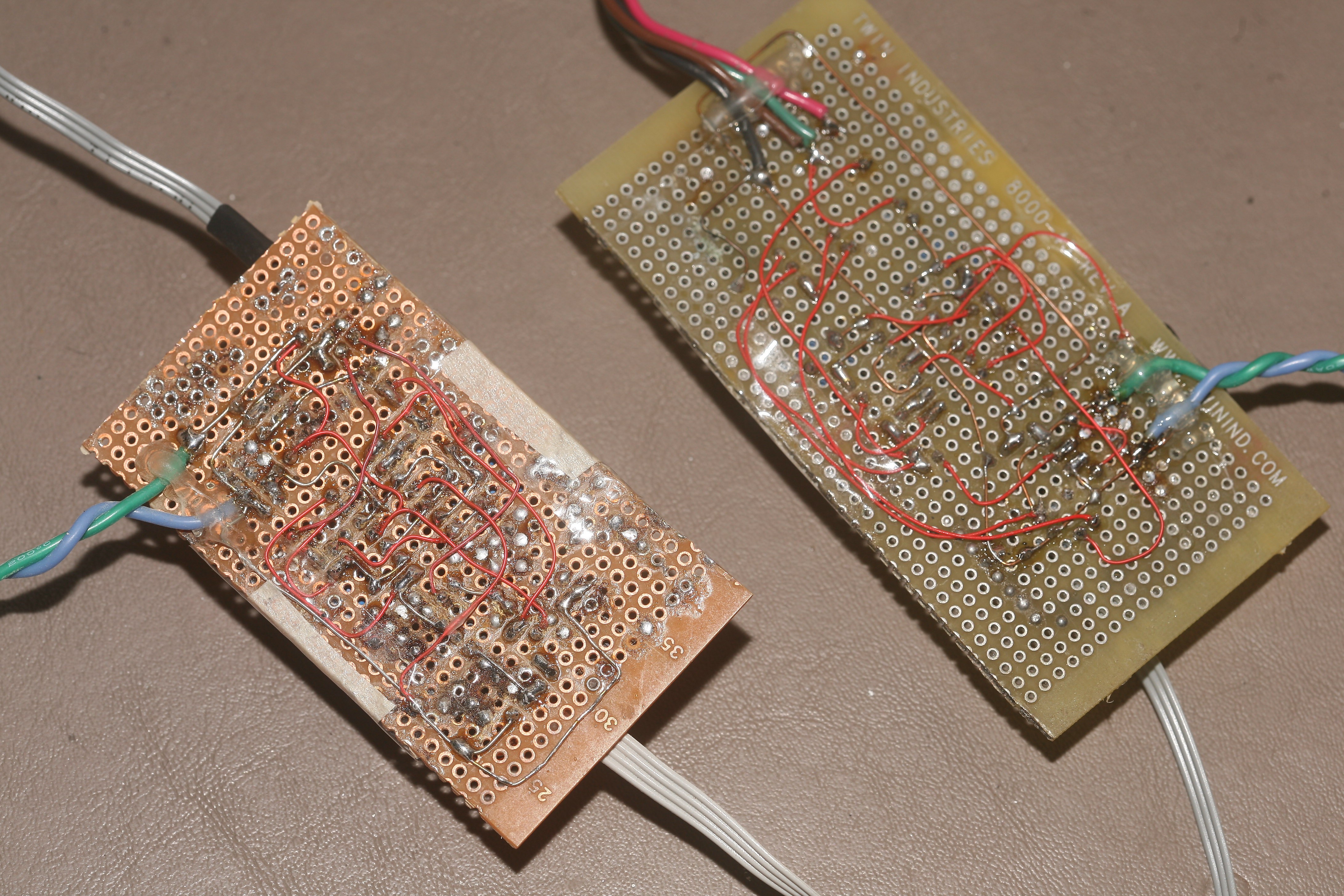
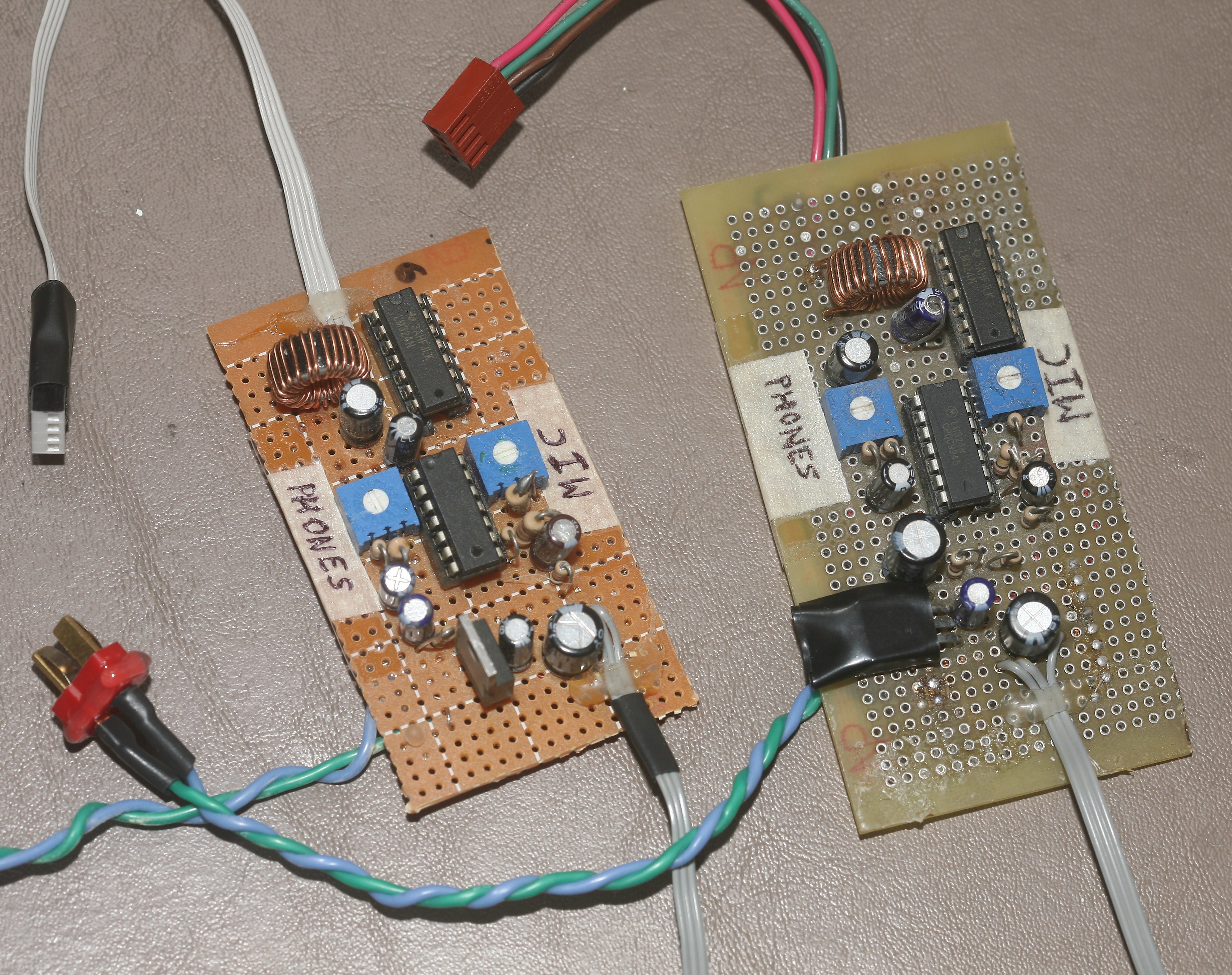
The lion kingdom long dreamed of having a 2nd headset monitor, so after 8 years, it finally was made with the exact same design.
These chunky through hole circuits feel more valuable than modern single chip, surface mount circuits.
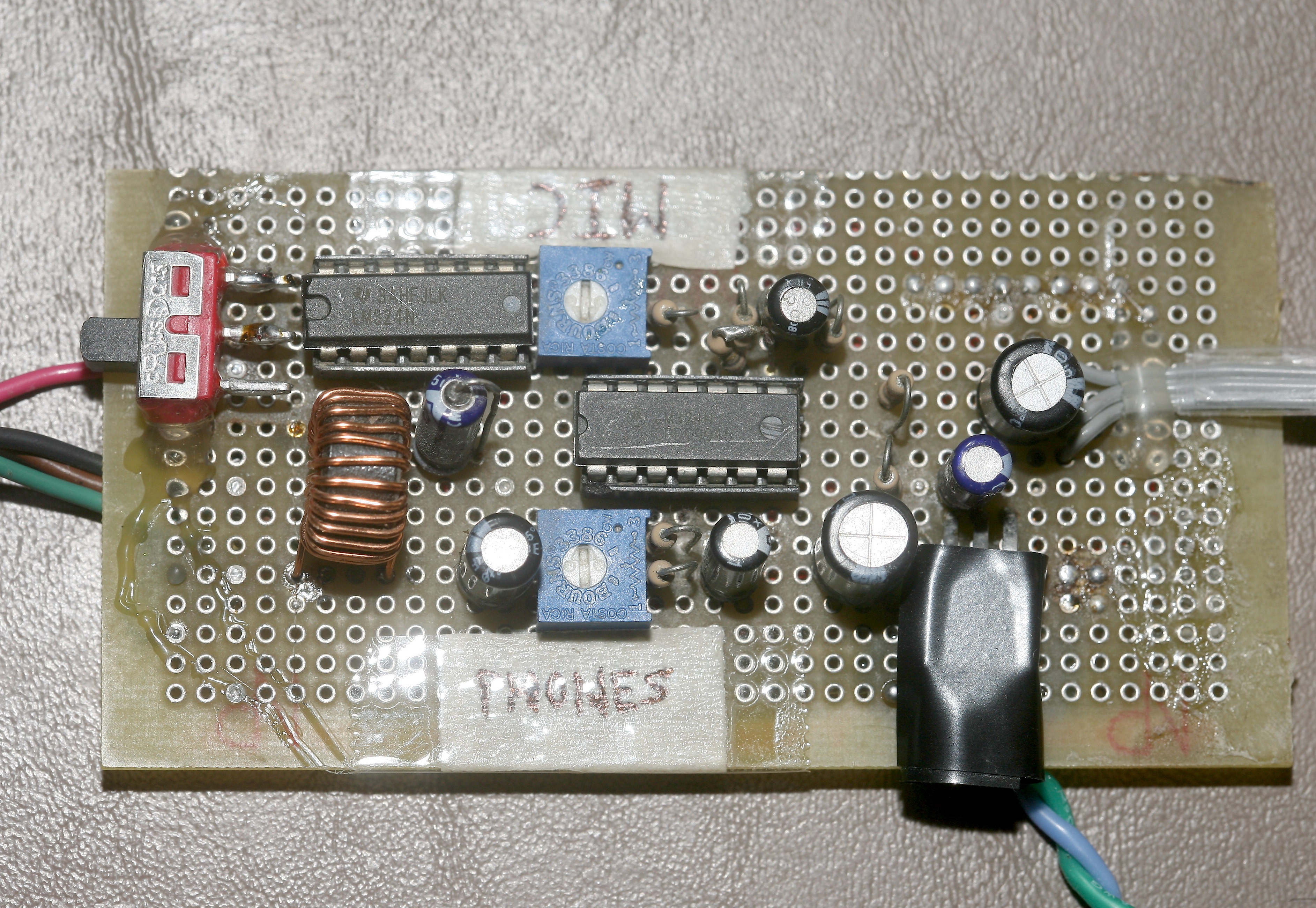
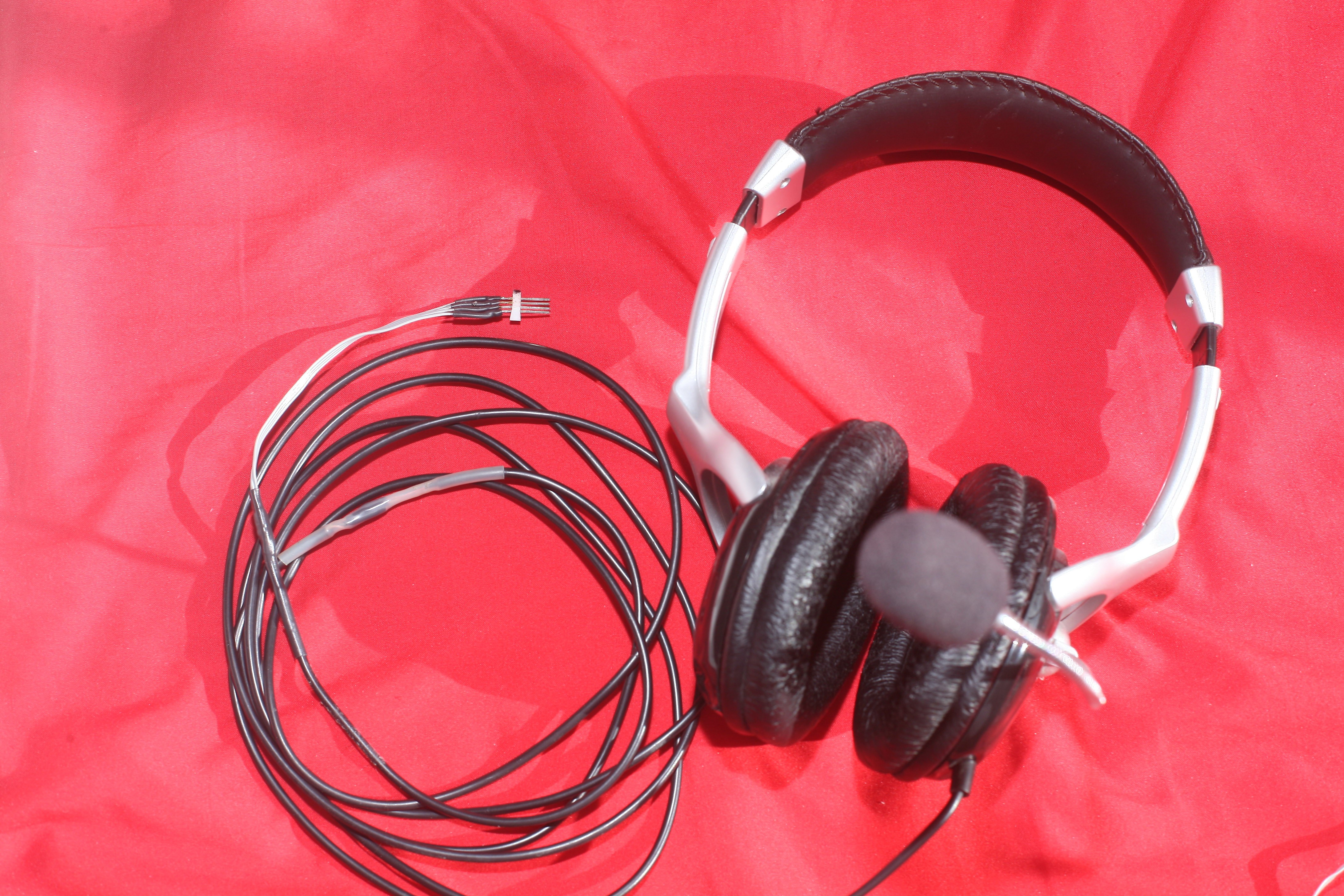
The original yapster TM-YB100A headset proved the best. Its microphone was long enough & could be hacked to not flop around. Lions discovered headphones don't need TRS connectors. The TRS connectors were replaced to make them smaller. Molex connectors have proven more compact & glitch about as often. Newer yapsters have shorter plastic microphones, which don't work as well. The original long microphone yapster continues to be sold.
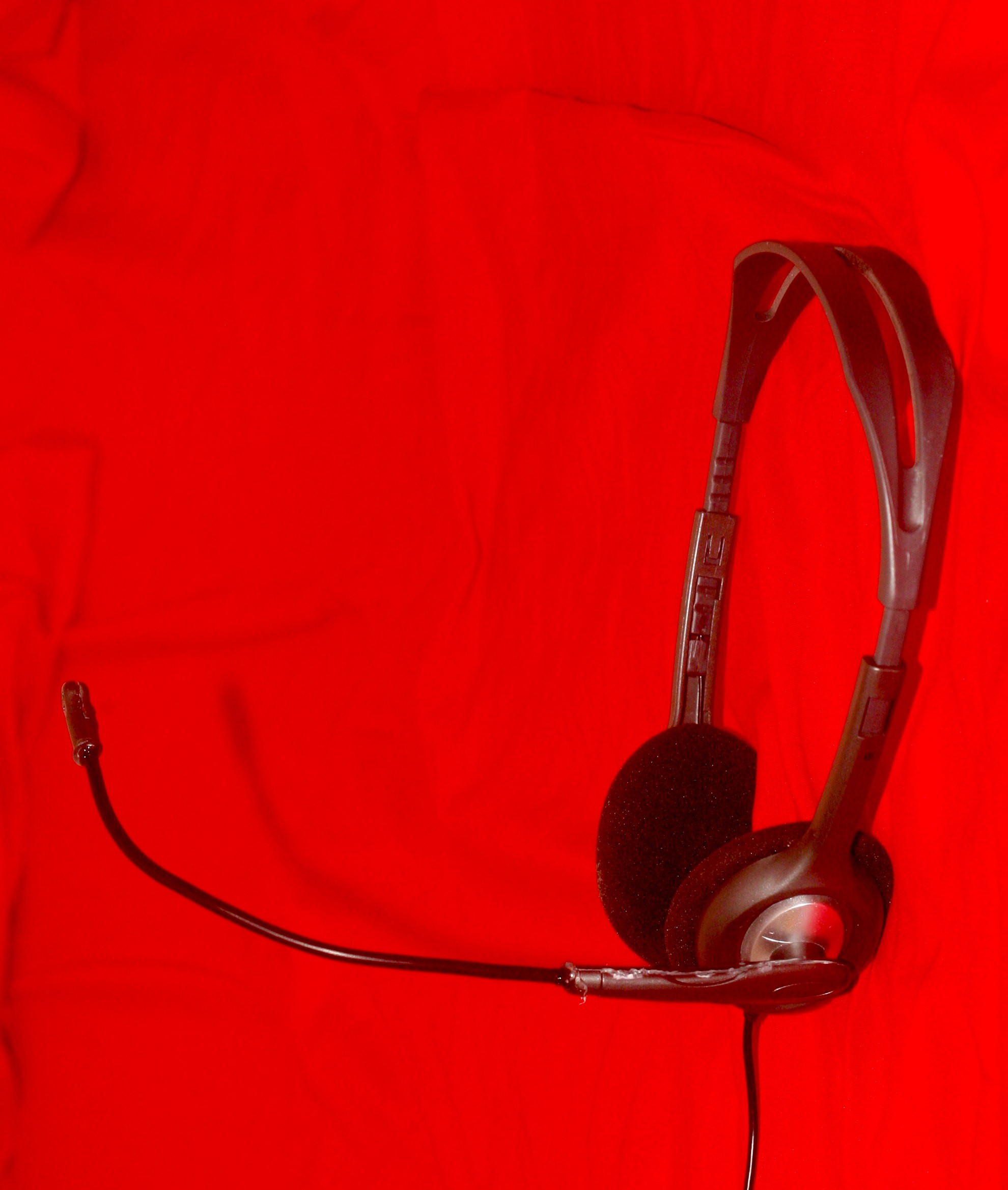
A new headset was built out of a Logitech H111. It had a defect in which the microphone was too short. The decision was made to fix it. Despite having some screws, the microphone assembly is not repairable. After cracking plastic welds & boring out the remanes of the microphone tube, it was ready for a longer tube. The original tube was ordinary pipe with 3 steel wires in it. This was replaced with a longer pipe & 2 steel wires because there was no pipe of suitable gauge to fit 3 steel wires in.
After hot gluing it back together, it was a mess with much better sound quality. The tube flops around, but is just rigid enough. The microphone could still be flipped out of the way, unlike the yapster. Unfortunately, the wind screen was lost. It's completely worthless without the wind screen. A new wind screen was fashioned out of packing foam & hot glue.
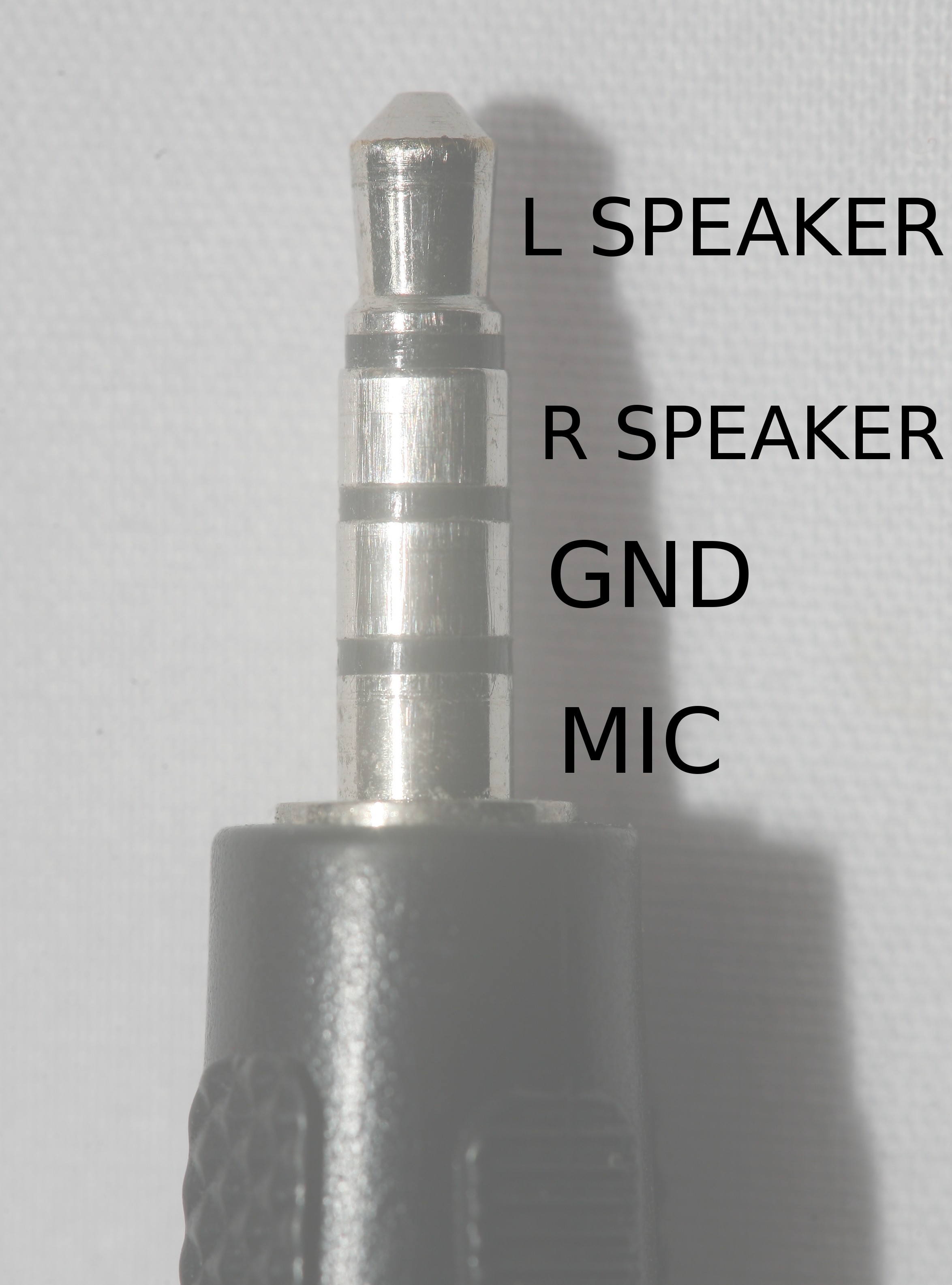
TRS connetor for the lion kingdom phones. There is no standard, though the internet assigns random acronyms to sound official.
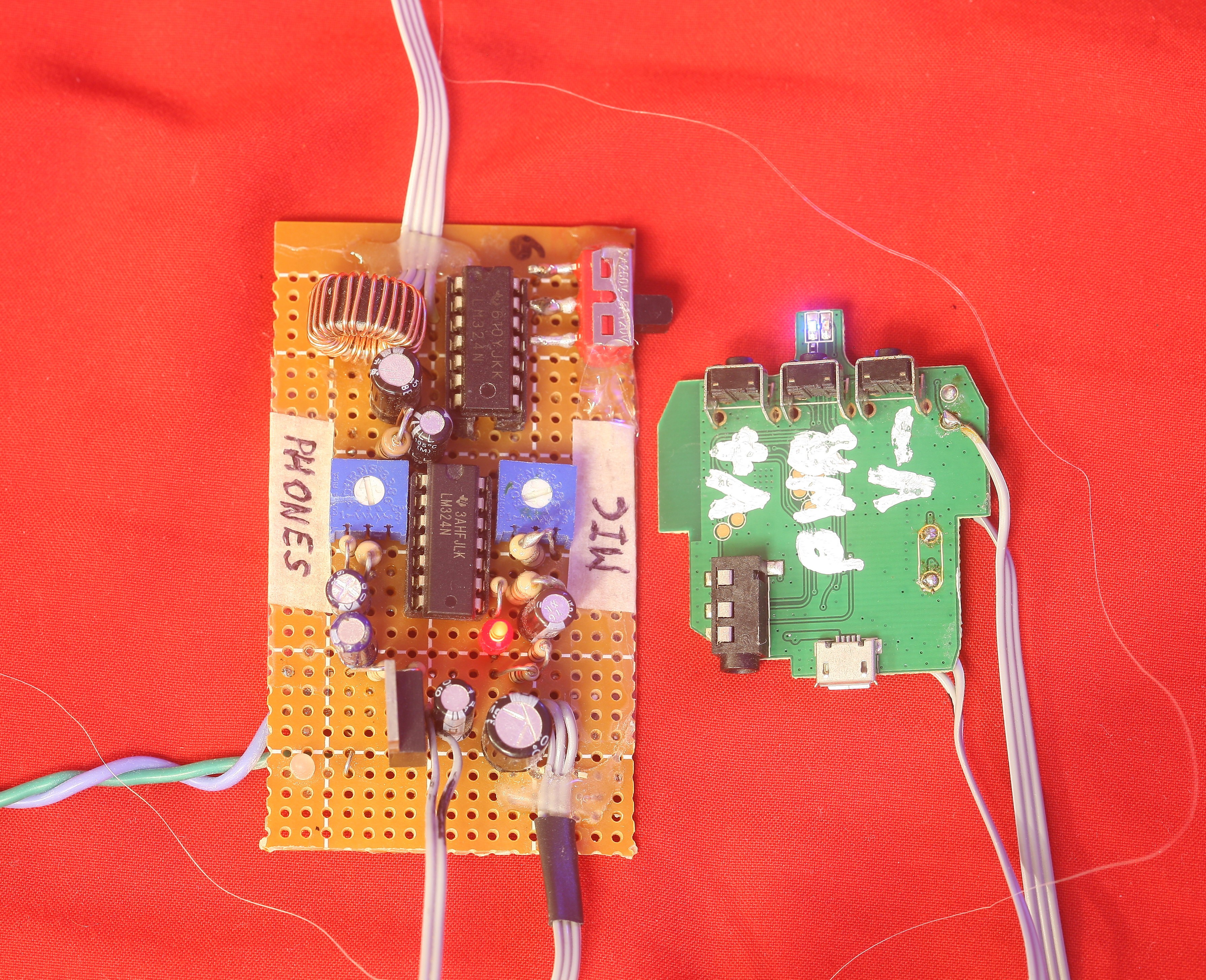
Installed a desperately needed power indicator & a bluetooth module. Once again encountered the famous lack of support for bluetooth microphones in Android. The bluetooth module also has a lot of interference. There is however no change in volume when muting the microphone.
 lion mclionhead
lion mclionhead